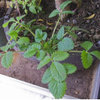Opinions and Experience using Ornamec 170
rjinga
15 years ago
Featured Answer
Sort by:Oldest
Comments (12)
jean001
15 years agolast modified: 9 years agorjinga
15 years agolast modified: 9 years agoRelated Professionals
Forest Acres Landscape Architects & Landscape Designers · South Orange Landscape Architects & Landscape Designers · Edmond Landscape Contractors · Andover Landscape Contractors · Bristol Landscape Contractors · Elmhurst Landscape Contractors · Hilton Head Island Landscape Contractors · Lorain Landscape Contractors · National City Landscape Contractors · Peachtree City Landscape Contractors · Ronkonkoma Landscape Contractors · Waltham Landscape Contractors · Irvington Landscape Contractors · Ansonia Landscape Contractors · Ferguson Landscape Contractorsrjinga
13 years agolast modified: 9 years agoBeeone
13 years agolast modified: 9 years agoheathersgarden
13 years agolast modified: 9 years agorjinga
13 years agolast modified: 9 years agoLauranneOliveau_aol_com
12 years agolast modified: 9 years agoruss_in_lodi
10 years agolast modified: 9 years agonjbiology
9 years agolast modified: 9 years agoKimmsr
9 years agolast modified: 9 years agoKimmsr
9 years agolast modified: 9 years ago
Related Stories

KITCHEN DESIGNWhat to Know About Using Reclaimed Wood in the Kitchen
One-of-a-kind lumber warms a room and adds age and interest
Full Story
KITCHEN COUNTERTOPS10 Countertop Mashups for the Kitchen
Contrast or complement textures, tones and more by using a mix of materials for countertops and island tops
Full Story
KITCHEN DESIGNKitchen of the Week: An 'Aha' Tile Moment in San Francisco
Design inspiration sometimes strikes in the place you'd least expect
Full Story
BATHROOM DESIGNHow to Choose the Right Bathroom Sink
Learn the differences among eight styles of bathroom sinks, and find the perfect one for your space
Full Story
ORGANIZINGDecluttering Ideas From Around the World
Home organizers share their tips on how to think and live more clearly
Full Story
BATHROOM DESIGNLight-Happy Changes Upgrade a Small Bathroom
Glass block windows, Starphire glass shower panes and bright white and blue tile make for a bright new bathroom design
Full Story
HOUSEKEEPINGHow to Clean Hardwood Floors
Gleaming wood floors are a thing of beauty. Find out how to keep them that way
Full Story
SMALL HOMESHouzz Tour: Sustainable, Comfy Living in 196 Square Feet
Solar panels, ship-inspired features and minimal possessions make this tiny Washington home kind to the earth and cozy for the owners
Full Story
TINY HOUSESHouzz Tour: A Custom-Made Tiny House for Skiing and Hiking
Ethan Waldman quit his job, left his large house and spent $42,000 to build a 200-square-foot home that costs him $100 a month to live in
Full Story
FLOORSIs Radiant Heating or Cooling Right for You?
Questions to ask before you go for one of these temperature systems in your floors or walls (yes, walls)
Full Story






Kimmsr